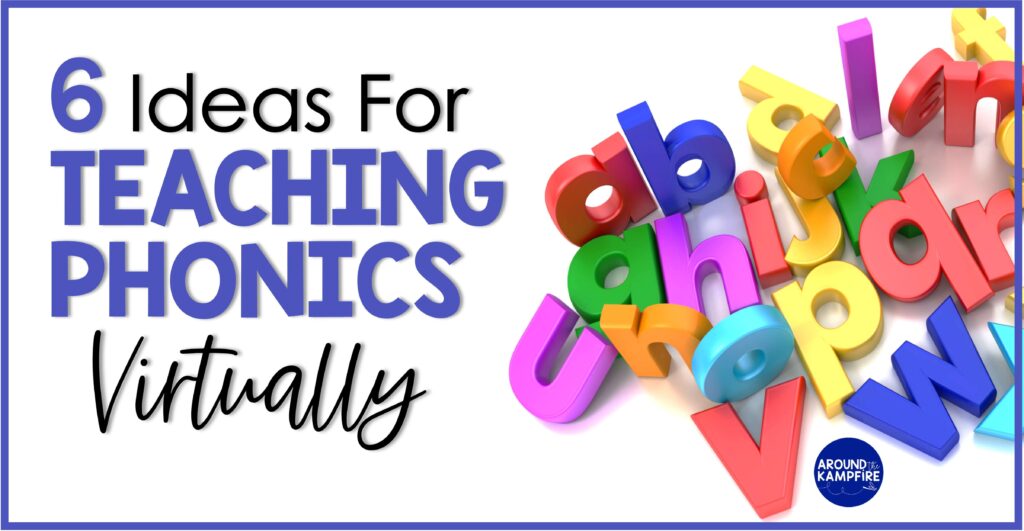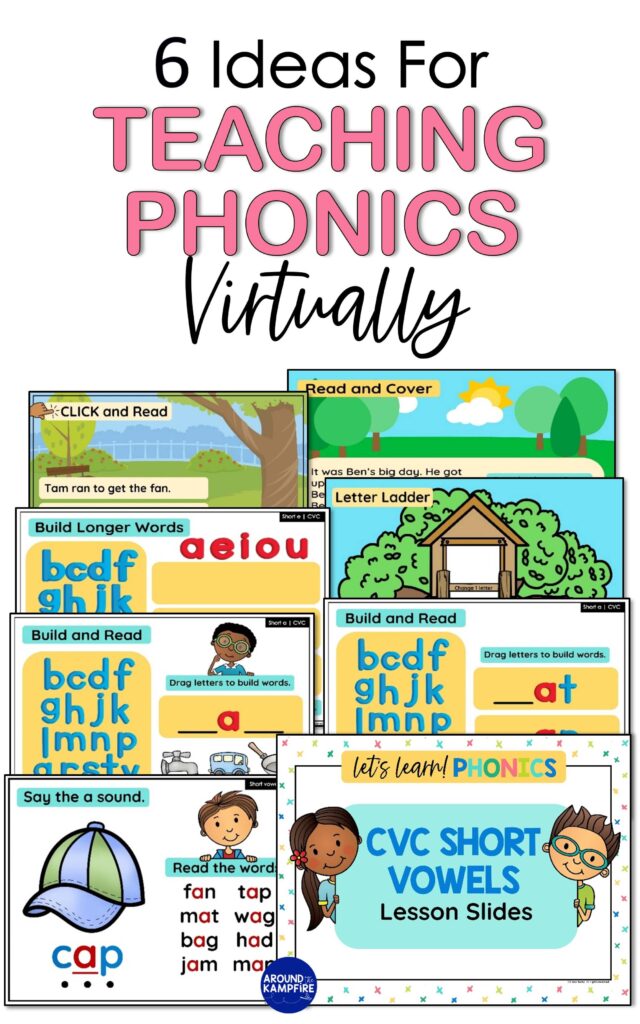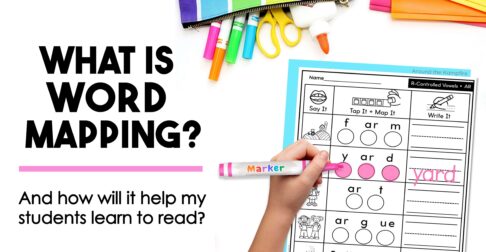If you are a primary teacher starting back to school with distance learning, you are probably asking yourself, “How on earth am I going to teach phonics virtually?”. Teaching letter sounds and mouth movements are key components of phonics instruction, but how do you teach that over a Zoom meeting? Here are six ideas for how to teach phonics virtually with tips for teaching sounds, using manipulatives, and more during a class Zoom meeting.

How to Teach Phonics Virtually during a Zoom meeting
Make send-home manipulatives
Just like in the classroom, students will need to use manipulatives at home. Using letter manipulatives helps build their understanding of letter/sound relationships. Copy or email your parents a sheet of printable letter cards for students to cut out and use at home. Parents can also pick up magnetic or foam letters at the dollar store for students to work with during your phonics lessons.
For spelling and reading practice, direct students to place specific letters in a specific order. Then have them read the word. Dictate words for students to make with their letters to give practice in segmenting sounds.
Use videos that model mouth movements
Students need to see how to move their mouth when learning to make letter sounds. Teaching this over a Zoom call makes it harder for students to see. These fun phonics videos by Turtle Diary include animated mouths that form the sounds as the words are spoken. Students can watch the mouth as they listen to the spoken word to help them make the sounds on their own.

Click the links below to view them on YouTube.
Display a portable sound wall
Make a simple sound wall on chart paper or a piece of trifold poster board from the dollar store. These are so easy to make and serve as a good reference display to call students’ attention to during your lessons.
To add the wall to your lesson routine, show students a letter card, introduce the sound, then add it to your chart. The sound wall can become a “chant chart” to warm students up before you begin next time. Chant the chart by having student all together, say the letter names, then say the the sounds. Have students chant in a sing songy way to the tune of the Jeopardy theme song.
Model with an interactive Power Point or Google Slides
Modeling for students how to isolate, segment, blend, and decode takes a little planning when teaching phonics virtually. Use a phonics teaching Power Point or Google slides presentation with moveable letters, then share your screen to model word building, spelling, and reading target words.

The phonics teaching slides I use have a daily phonics routine with decodable phonics passages, word building, and spelling dictation built in.
Practice using digital phonics activities
Have students practice at home with digital phonics games, phonics websites, or even digitized worksheets. You can adapt your regular resources for distance learning by digitizing your hard copy practice pages. Once they are digitized you can upload and share them with students on the learning platform you use.
These digital phonics activities give students practice spelling, blending, sorting, and reading CVC words.
Have students make at-home phonics journals
At-home phonics journals are simply paper to write on stapled together. Students can also use spiral notebooks of course, but anything they have to write on will work. As part of your daily virtual phonics routine, dictate words for students to spell. Have students use their letters to build the word before writing them. Guide students to make new words, as you model on your teaching slides, by changing one letter.
Another simple journal activity is to have students make a T-chart and sort words by writing them. Choose two vowel sounds and hold up picture cards. Ask students to write the picture names in the correct space in the chart.
I hope these ideas make planning and teaching phonics virtually a bit easier. Be sure to share this post with your teacher friends1

Happy teaching!







Thank you for the content. Very well explained.
I am a Paraprofessional teacher. I know phonics too
Thanks so much!